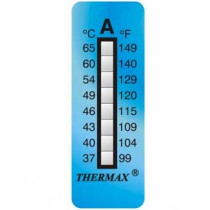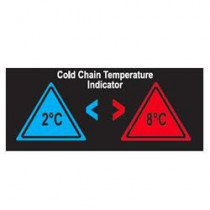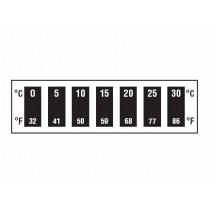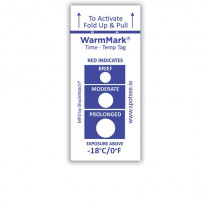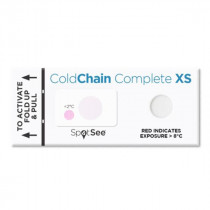No products
Prices do not include tax.
Laboratories: thermometers and temperature control
In this entire chain, the pharmaceutical companies also have to comply with the limits set to preserve the medicines in order not to jeopardize the patients’ safety. You must know that both the formulation and the active ingredients of a drug can suffer irreversible changes if this fails to be done.
Laboratory thermometers: most common products
This product is supplied in packets with 10 thermometers. Irreversible-type temperature indicator with 8 temperature points. This is an adhesive thermometer than can be stuck on any surface or product. The points are marked with temperature in ºC and ºF.
8-level irreversible thermometers (pack 10...15,20 €LCD reversible adhesive temperature indicator. This label changes colour on the basis of the temperature.
Reversible temperature indicator for the...42,95 €The TDI adhesive temperature label is an indicator coming with three irreversible temperature points. It has been specifically manufactured to control the sanitizing of industrial dishwashers.
TDI Label- TDI Thermometer for the control...292,88 €Horizontal adhesive thermometer with 7 temperature points changing their colour to display the temperature detected. It can be supplied in packs of 10 units. This thermometer is displayed in ºC and ºF.
7 level adhesive LCD thermometer (pack 10...12,70 €Irreversible time and temperature indicator by color change. This adhesive label alerts you to inappropriate temperature exposure by progressively changing the color of the control points. Each point is calibrated for a specific period of time, thus allowing control of the exposure time at that temperature.
WarmMark Time and Temperature (pack 100...227,50 €Coldchain complete XS is a temperature label for cold chain control. This indicator is irreversible and alerts us by means of a color change if a product has been exposed outside the required temperature range, both above and below it. It is supplied in packs of 100 units.
Coldchain Complete XS cold chain...307,00 €
Laboratory instruments for temperature measurement: thermometers
Now that we are in context, we will explain the two types of laboratory thermometers used to control temperature properly, both for medicines and for some industrial products (glass containers, ampoules, syringes or others) that require specific refrigeration conditions. In this environment, the aim is to maintain a stable temperature between 2 °C and 8 °C. Inside refrigerators designed specifically for this purpose, adequate temperatures are achieved. However, they must be monitored using indicators and sensors to prevent any variations.
On the other hand, a thermometer is also required in laboratory equipment sterilization machines. The aim is to make sure that the process is completed correctly and without failure due to inadequate temperatures. In such environments, the important thing is to check that a high enough temperature has been reached for disinfection. This is usually around 71 °C, although it may vary depending on the material. Thus, the two thermometers perform different functions, but they have one characteristic in common – they are both adhesive. This makes their use easy and practical since they directly detect the actual temperature when adhered to the product.
Time and temperature indicators: cold chain control in vaccines and medicines
These adhesive labels have control points that change their color when exposed to temperatures higher than those marked for longer than established. They are the easiest and cheapest way to control the cold chain in thermolabile medicines and vaccines. The color change is permanent and therefore guarantees that the vaccine or medicine has not been exposed to an inappropriate temperature for longer than it can bear without degrading.Irreversible laboratory thermometers: ideal for material sterilization processes
These types of temperature indicators have dots that act as sensors and change colouras the calibrated temperature is reached or exceeded. They areirreversible because, when these degrees are reached, the label permanently changes. This guarantees whether or not the calibration temperature has been exceeded by simply looking at each thermometer, which can even be peeled off and attached to reports.
These control elements are resistant to water, oil and steam. They are ideal in processes such as sterilization of laboratory material, unassisted control of thermal processes or compliance with the cold chain in special refrigerators. They are available in different sizes and formats, from 1 to 10 levels.
Reversible thermometers or liquid crystal strips
Reversible thermometers are strips made of liquid crystal. They are flexible and adhesive and can be placed directly on the product. The reversible laboratory thermometer changes colour as the temperature varies, displaying the current temperature at all times. This type of indicator comes in handy to view the current temperature in special refrigerators and storage areas. It is also used for temperature control of samples or preparations. There are also several models, from 7 to 16 levels. Its accuracy is ±1 °C.In short, we would like to highlight that this type of temperature indicator is key to the safe operation of the pharmaceutical industry. Therefore, you should have good laboratory instruments and a laboratory thermometer of excellent quality.

